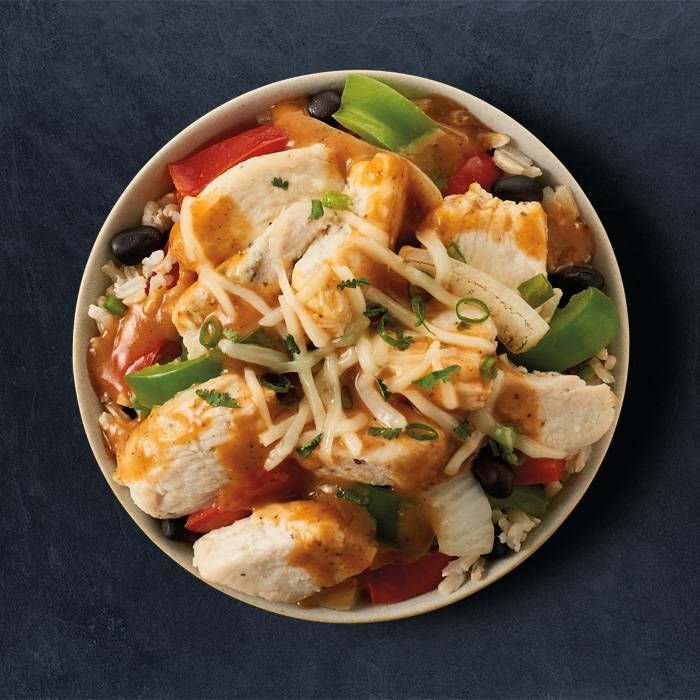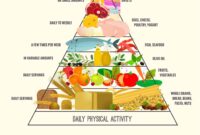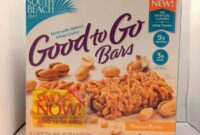Easy South Beach Diet Recipes offers a refreshing approach to healthy eating. This guide simplifies the South Beach Diet, focusing on delicious, easy-to-prepare recipes that adhere to the core principles of the plan: emphasizing healthy fats, limiting processed carbohydrates, and promoting sustainable weight management. We’ll explore simple breakfast, lunch, dinner, and snack options, along with helpful tips for meal planning and adapting recipes to your individual needs and preferences. Whether you’re a seasoned South Beach Diet follower or a curious newcomer, this guide provides the tools and inspiration to make healthy eating a joyful and achievable part of your life.
The South Beach Diet, known for its phased approach, prioritizes balanced nutrition over restrictive calorie counting. Phase one emphasizes eliminating sugary foods and processed carbohydrates, while introducing healthy fats and lean protein. Subsequent phases gradually reintroduce certain carbohydrates, ensuring a sustainable lifestyle change. This guide focuses on providing recipes that are suitable across all phases, allowing for flexibility and ease of use.
Introduction to Easy South Beach Diet Recipes
The South Beach Diet is a popular weight-loss plan that emphasizes healthy eating habits rather than restrictive calorie counting. It focuses on stabilizing blood sugar levels and promoting sustained energy throughout the day, unlike many fad diets that lead to rapid weight loss followed by regain. This approach makes it a more sustainable and manageable long-term strategy for weight management.
The core principle of the South Beach Diet lies in its careful selection of carbohydrates. Unlike many diets that severely restrict all carbohydrates, the South Beach Diet differentiates between “good” and “bad” carbs. It emphasizes the consumption of healthy fats, lean proteins, and complex carbohydrates while significantly limiting processed carbohydrates, sugary foods, and unhealthy fats. This approach aims to avoid the blood sugar spikes and crashes often associated with refined carbohydrates, leading to reduced cravings and improved metabolic function.
The Three Phases of the South Beach Diet
The South Beach Diet is structured into three phases, each designed to achieve specific goals. The first phase, lasting two weeks, is the most restrictive. It focuses on eliminating “bad” carbohydrates like white bread, sugary drinks, and pastries. This initial phase aims to quickly reduce inflammation and jumpstart weight loss by stabilizing blood sugar. The second phase is a more flexible transition period where healthy carbohydrates are gradually reintroduced. This phase emphasizes maintaining the weight loss achieved in phase one while broadening the dietary options. The final phase, phase three, is the maintenance phase, designed to help individuals maintain their weight loss long-term by incorporating a sustainable, healthy eating pattern. This phase involves mindful eating habits and continued focus on healthy food choices.
Lunch Recipes
Lunch is a crucial meal within the South Beach Diet framework, providing sustained energy and supporting your weight-loss goals. Choosing the right foods at lunchtime helps to prevent afternoon energy slumps and cravings, keeping you satisfied and on track with your dietary plan. The following recipes emphasize lean protein and ample vegetables, key components of a successful South Beach Diet.
These recipes are designed to be both delicious and easy to prepare, fitting seamlessly into busy schedules. Remember to focus on portion control for optimal results. The South Beach Diet’s emphasis on healthy fats, lean protein, and non-starchy vegetables ensures you feel full and energized throughout the day.
South Beach Diet Lunch Recipe Examples
The following are five sample lunch recipes that adhere to the principles of the South Beach Diet. These recipes offer variety and can be easily adapted to suit individual preferences and dietary needs. Remember to adjust portion sizes to meet your individual caloric needs.
- Grilled Chicken Salad with Avocado and Mixed Greens: Grilled chicken breast (4-6 oz), mixed greens (2 cups), sliced avocado (1/4), cherry tomatoes (1/2 cup), and a light vinaigrette dressing (2 tablespoons). This offers lean protein, healthy fats, and plenty of fiber.
- Salmon with Roasted Asparagus and Quinoa: Baked salmon fillet (4-6 oz), roasted asparagus (1 cup), and cooked quinoa (1/2 cup). This combination provides omega-3 fatty acids, lean protein, and complex carbohydrates.
- Turkey and Vegetable Wrap: Lean turkey breast (4-6 oz), shredded carrots (1/2 cup), cucumber slices (1/2 cup), bell pepper strips (1/2 cup), and a whole-wheat tortilla (choose a low-carb option if needed). This offers a convenient and satisfying lunch option.
- Shrimp Scampi with Zucchini Noodles: Shrimp (4-6 oz), zucchini noodles (2 cups), garlic, lemon juice, and herbs. This low-carb alternative to traditional pasta offers lean protein and plenty of flavor.
- Tuna Salad Lettuce Wraps: Canned tuna in water (4-6 oz), celery (1/4 cup), red onion (1 tablespoon), a dollop of light mayonnaise (1 tablespoon), and crisp lettuce leaves. This is a quick and easy option, high in protein and low in carbohydrates.
Portion Control and Healthy Weight Maintenance
Portion control is paramount to successful weight management on the South Beach Diet. Consuming appropriate portion sizes prevents overeating, even with healthy foods. Understanding your individual caloric needs and aiming for a balanced intake of macronutrients (protein, carbohydrates, and fats) is key. Using smaller plates and measuring food can aid in portion control. Regular monitoring of your weight and adjustments to portion sizes as needed is also beneficial.
Packing a Healthy South Beach Lunch
Preparing and packing a South Beach Diet lunch for work or school is achievable with a little planning. Utilize reusable containers to pack your meals. Choose foods that travel well and don’t require refrigeration for extended periods. For instance, a hard-boiled egg, a small container of nuts, and some baby carrots make a great grab-and-go snack or a small part of a lunch. Preparing larger batches of components on the weekend can save time during the week. For example, grilling extra chicken breast for salads or roasting vegetables for multiple meals. Planning ahead simplifies the process and promotes healthy eating habits.
Recipe Variations and Adaptations
The beauty of the South Beach Diet lies in its flexibility. While the core principles emphasize healthy fats and lean proteins, many recipes can be easily adapted to suit individual dietary needs and preferences, allowing for a diverse and enjoyable eating experience without compromising the diet’s fundamental benefits. This adaptability ensures long-term adherence and prevents dietary monotony.
Adapting recipes to accommodate various dietary restrictions and preferences requires careful consideration of ingredient substitutions and their impact on the overall nutritional profile. Understanding the role of each ingredient allows for informed choices that maintain the recipe’s essence while meeting specific needs.
Adapting Recipes for Vegetarian and Vegan Diets
Many South Beach recipes naturally lend themselves to vegetarian adaptations. For example, chicken can often be replaced with firm tofu or tempeh for a similar protein source. Ground turkey or beef can be substituted with lentils or mushrooms, providing texture and heartiness. To maintain the healthy fat content, consider adding avocado, nuts, or seeds. Vegan adaptations require a more thorough review of ingredients, ensuring all dairy and egg products are replaced with suitable vegan alternatives like plant-based milks, flax eggs, or vegan cheese. It’s important to note that maintaining adequate protein intake can be more challenging in vegan adaptations, so careful planning and ingredient selection are crucial. For instance, a recipe calling for chicken breast could be modified by substituting it with a hearty portion of chickpeas or lentils, providing a comparable amount of protein and fiber.
Ingredient Substitution and Nutritional Integrity
Substituting ingredients requires understanding their nutritional value and how they impact the recipe’s overall balance. For instance, swapping white rice for cauliflower rice reduces carbohydrate content while maintaining a similar texture. Replacing butter with olive oil provides healthy monounsaturated fats. However, it’s important to be mindful of calorie and macronutrient changes. A detailed nutritional comparison between the original and adapted recipes can be beneficial, particularly for those closely monitoring their intake. For example, if a recipe calls for heavy cream, substituting it with unsweetened almond milk will significantly reduce the fat and calorie content, potentially altering the recipe’s texture and richness. However, the reduction in saturated fat is a beneficial trade-off for many individuals following the South Beach Diet.
Nutritional Comparison of South Beach Recipes
The nutritional value of South Beach recipes varies considerably depending on the ingredients used. Recipes emphasizing lean proteins and non-starchy vegetables will generally be lower in carbohydrates and higher in protein and fiber. Recipes incorporating healthy fats, such as avocados and nuts, will have a higher fat content but will contribute essential fatty acids and promote satiety. For example, a grilled salmon salad with mixed greens and a light vinaigrette will have a vastly different nutritional profile than a recipe for shrimp scampi with pasta. The former will be higher in protein and omega-3 fatty acids, while the latter will be higher in carbohydrates and potentially saturated fat, depending on the preparation method. Comparing the macronutrient breakdown (protein, carbohydrates, and fat) alongside the micronutrient content (vitamins and minerals) offers a comprehensive understanding of the nutritional value of different recipes.
Concluding Remarks
Embarking on a healthy eating journey can feel daunting, but with the right resources and approach, it can be both rewarding and enjoyable. This guide to Easy South Beach Diet Recipes provides a practical and accessible pathway to achieving your health goals. By incorporating these simple yet delicious recipes into your daily routine, you can experience the benefits of the South Beach Diet without sacrificing taste or convenience. Remember, consistency and mindful choices are key to long-term success. We encourage you to experiment with these recipes, adapt them to your liking, and discover the joy of healthy, flavorful eating.




